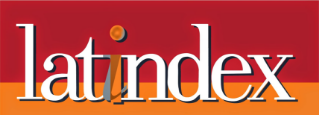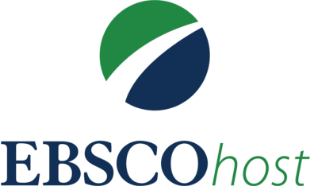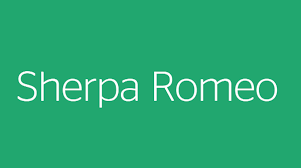Comunicación a larga distancia: publicidad en México en la emergencia sanitaria, coincidencias y divergencias
DOI:
https://doi.org/10.36105/stx.2022n8.05Palabras clave:
publicidad con causa, comunicación en pandemia, nuevos tipos de audiencias, reputación digital, comunicación por la saludResumen
La planeación estratégica tiene entre sus funciones la de prever posibles contingencias que puedan presentarse al interior y al exterior de las organizaciones, con la finalidad de estar preparados y contar con las mejores tácticas y herramientas ante una situación de crisis (Sallenave, 2002). Incluso, hay quien piensa que la mayoría de las situaciones adversas que enfrentan las organizaciones son causadas por estas mismas (Costa, 2018). Hay crisis para las que no hay protocolo alguno, como la crisis sanitaria por Covid-19. La metodología de este trabajo consiste en una revisión de material publicitario audiovisual presente en internet en México de la fenomenología en torno de la comunicación de marca frente a la pandemia y una comparativa mediante categorías de análisis. El objetivo de este trabajo de investigación es establecer coincidencias y divergencias entre campañas de comunicación de marca en México y contrastarlas contra un estado del arte construido para este objetivo.
Descargas
Referencias
Aeroméxico. (2021). #OrgulloAeroméxico. https://www.adlatina.com/campa%C3%B1as/ad-age-eeuu:-la-ceo-de-youtube-le-responde-a-trump-y-un-spray-de-pimienta-es-lo-m%C3%A1s-vendido-en-amazon
Audi. (2021). #StayHome. https://www.adlatina.com/campa%C3%B1as/acmcgarrybowen.com
Barthes, R. (1971). Elementos de semiología. Alberto Corazón.
Barthes, R. (1993). La aventura semiológica. Paidós.
Bauman, Z. (2008). La Sociedad Sitiada. Fondo de Cultura Económica.
Bergkvist, L. y Taylor, C. (2016). Leveraged marketing communications: A framework for explaining the effects of secondary Brand associations. AMS Review, 3-4, 157-75. https://doi.org/10.1007/s13162-016-0081-4
Bergkvist, L. y Zhou, K. Q. (2019). Cause-related marketing persuasion research: An integrated framework and directions for further research. International Journal of Advertising, 38(1), 5-25. https://doi.org/10.1080/02650487.2018.1452397
Bourdieu, P. (1996). Sobre la Televisión. Anagrama.
Byung-Chul, H. (2017). La Sociedad del Cansancio. Herder.
Christie, D. (2020, 19 de mayo). Sameness, exploitation sets in for COVID-19 ads, study says. https://www.marketingdive.com/news/sameness-exploitation-sets-in-for-covid-19-ads-study-says/578202/
Cinemex. (2021, 21 de julio). Covid-pause. https://www.adsoftheworld.com/media/film/cinemex_covidpause
Corona, A. (2014, 4 de marzo). El nuevo CEO de tu empresa: el consumidor. https://www.informabtl.com/el-nuevo-ceo-de-tu-empresa-el-consumidor/
Corredor-Lanas, P., Marcos-Recio, J.-C. y Montañés-García, F. (2021). Impacto de la pandemia Covid-19 sobre la publicidad. España como laboratorio de la crisis y de las tendencias comunicativas. Profesional de la información, 3, e300313. https://doi.org/10.3145/epi.2021.may.13
Costa, J. (2012, 19 de marzo). Joan Costa: El error de las empresas es su incongruencia. Diario Gestión. https://www.youtube.com/watch?v=7O9eG1EtlLg
Del Vasto, M. (2020). Publicidad en plataformas y estrategias digitales alternativas al COVID 19. FAECO SAPIENS, 28-43. http://portal.amelica.org/ameli/jatsRepo/221/2211951002/html/index.html
Donthu, N. y Gustafsson, A. (2020). Effects of COVID-19 on business and research. Journal of business research, 117, 284–289. https://doi.org/10.1016/j.jbusres.2020.06.008
Feenstra, R. (2014). Ética de la publicidad. Retos en la era digital. Dykinson.
Klein, N. (2008). The Shock Doctrine: The Rise of Disaster Capitalism. Penguin.
KFC. (2021). Mamá Conference. https://www.adlatina.com/campa%C3%B1as/mam%C3%A1-conference
Lanier, J. (2018). Diez Razones para borrar tus redes sociales de inmediato. Penguin Random House.
Martin, A. (2013). Si no estás pagando, eres tú el producto que están vendiendo. Novática.
Park, J., Kim, J., Lee, D. C., Kim, S. S., Voyer, B. G., Kim, C., Sung, B, Gonzalez-Jimenez, H.,Fastoso, F., Choi, Y.,Yoon, S. (2021). The impact of COVID-19 on consumer evaluation of authentic advertising messages. Psychology and Marketing. https://doi.org/10.1002/mar.21574
Rojas-Rajs, S. y Jarillo, E. (2013). Comunicación para la salud y estilos de vida saludables: aportes para la reflexión desde la salud colectiva. Interface-Comunicação, Saúde, Educação, 587-599. https://doi.org/10.1590/S1414-32832013000300008
Royo-Vela, M. y Bigné, E. (2002). Una propuesta consensuada de las categorias para el analisis informativo de la publicidad. Revista Europea de Direccion y Economia de la Empresa. https://dialnet.unirioja.es/servlet/articulo?codigo=253885
Sabritas. (2020). #Estáennuestrasmanos. https://www.adlatina.com/campa%C3%B1as/sabritas-%C2%AE-estaennuestrasmanos
Sallenave, J. P. (2002). Gerencia y planeación estratégica. Norma.
Schaefer, S., Terlutter, R. y Diehl., S. (2020). Talking about CSR matters: Employees’ perception of and reaction to their company’s CSR communication in four different CSR domains. International Journal of Advertising, 39(2), 191-212. https://doi.org/10.1080/02650487.2019.1593736
Shin, H. y Kang, J. (2020). Reducing perceived health risk to attract hotel customers in the COVID-19 pandemic era: Focused on technology innovation for social distancing and cleanliness. International Journal of Hospitality Management, 91, e102664. https://doi.org/10.1016/j.ijhm.2020.102664
Sobande, F. (2020). ‘We're all in this together': Commodified notions of connection, care and community in brand responses to COVID-19. European Journal of Cultural Studies, 23(6), 1033-1337. https://doi.org/10.1177/1367549420932294
Taylor, C. R. (2020). Advertising and COVID-19. International Journal of Advertising, 39(5), 587-589. https://doi.org/10.1080/02650487.2020.1774131
Tulchinskii, G. L. (2020). The dynamics of public discourse during the coronavirus pandemic: a request for responsibility. Russian Journal of Communication, 12(3), 193-214. https://doi.org/10.1080/19409419.2020.1838875
Twitter México. (2020, 17 de diciembre). Best of Tweet Mexico 2020. https://blog.twitter.com/es_la/topics/company/2020/best-of-tweets-mexico-2020
Uber Eats Latam. (2021). #Graciasportuentrega https://www.adlatina.com/campa%C3%B1as/graciasportuentrega
Vlad, D., Sands, S., Campbell, C. y Pitt, L. (2021). “Unprecedented,” “extraordinary,” and “we're all in this together”: Does advertising really need to be so tedious in challenging times? Marketing & Techonology, 64(4), 415-424. https://doi.org/10.1016/j.bushor.2021.02.007
Vorhaus, M. (2020). COVID-19 represents the biggest challenge to media advertising expenditures ever. https://www.forbes.com/sites/mikevorhaus/2020/04/27/covid-19-represents-the-biggest-challenge-to-media-advertising-expenditures-ever/

Publicado
Número
Sección
Licencia

Esta obra está bajo una licencia internacional Creative Commons Atribución-NoComercial-SinDerivadas 4.0.
Sintaxis. Revista científica del Centro de Investigación para la Comunicación Aplicada© se distribuye bajo una Licencia Creative Commons Atribución-NoComercial-SinDerivadas 4.0 Internacional.
El autor conserva los derechos patrimoniales sin restricciones y garantiza a la revista el derecho de ser la primera publicación del trabajo. El autor es libre de publicar en cualquier otro medio su artículo, como un repositorio institucional.
















